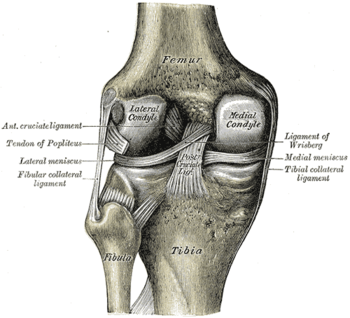
Over the past few years, I have seen many of my friends undergo operations on their knees. (And, others obtain replacement hips). They are just some of the 250,000 ACL (anterior cruciate ligament) injuries that are the annual affliction in the US. It scares me, to be honest.
Because I walk pretty fast, I ride my bike pretty fast (which is why I have a speedometer- Alexandria and DC cops find bikers easy targets for speeding tickets)- I generally go at everything pretty much at one speed- full. And, I don’t relish the prospect of any more synthetics in my body.
So, I read with great interest this new article in an obscure journal. (No, I don’t read it regularly. One of my colleagues recommended the read. Thanks, Seth!) Drs. DeAngelis (University of the Science, Philadelphia), Needle (Appalachian State, NC) , Kaminski, Royer, Knight, and Swanik (the latter all from Delaware) published the results of their study (‘An acoustic startle alters knee joint stiffness and neuromuscular control)’ in the Scandinavian Journal of Medicine and Science in Sports. (No! I did not make up that journal title.)
The researchers examine 36 young (20-ish) men and women who were students at the University of Delaware. Each of them were strapped into a motorized chair, that was capable of moving either leg at a set, controlled speed. The dominant leg (you know, lefty or righty) was attached to an ‘arm’ that initially raised the knee to a 30 degree angle (strapped at the ankle). Electrodes monitored the thigh muscle activity, which included knee stiffness, the muscle amplitude response, and the timings of these events.
The legs were then extended another 40 degrees, for which the subjects were told to resist the movement. Six separate trials were effected under these conditions. Except during three of those tests, a loud, brief beep was sounded (akin to the decibel level of a motorcycle). [The sound was 100 dB at 1000 Hertz, for a duration of 50 milliseconds, right (100 ms) before the forced knee flexure.]
Compared to those trials that were soundless, the “startled” responses incurred higher muscle stiffness for the first 4 or 5 degrees, after which muscle activity and stiffness were reduced. The authors postulated that this initial stiffness and higher muscle activity is what leads to abnormal stresses and unintentional injury.
However, both from the small study (18 each of men and women) and only an initial change was noted, further study is required. Plus, it’s not clear to me how we can protect folks against unintended noises. But, we may determine why seemingly simple injuries turn out to be so substantial in their results.






